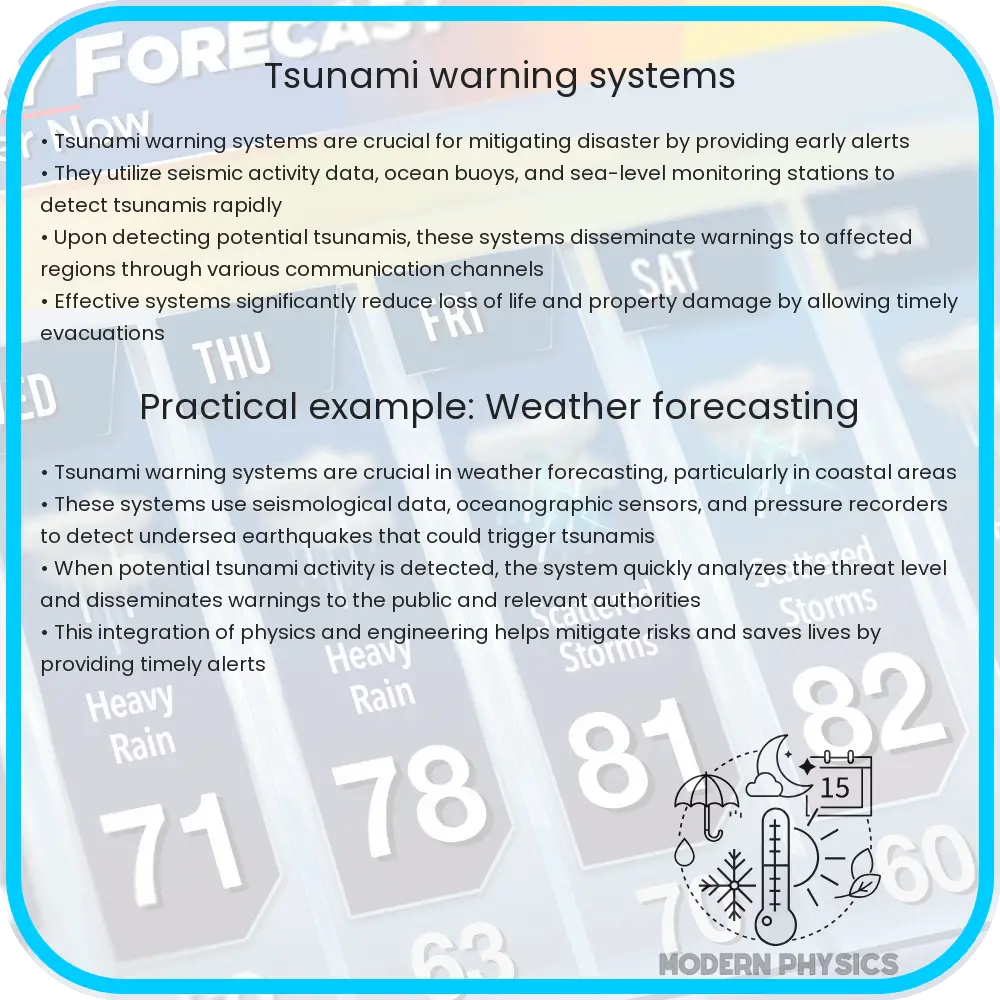Learn about tsunami warning systems, their essential components, and how they utilize advanced technologies to detect tsunamis and alert communities promptly.

Understanding Tsunami Warning Systems
Tsunamis are one of the most powerful and destructive natural phenomena. Originating primarily from undersea earthquakes, these high-energy waves can travel across oceans at speeds of up to 500 miles per hour. To mitigate their devastating impact, especially on coastal communities, robust tsunami warning systems are critically essential. These systems combine accuracy, speed, and the latest technologies to detect tsunamis early and provide timely alerts to the public.
Components of a Tsunami Warning System
A comprehensive tsunami warning system includes several key components:
- Seismic Activity Monitors: These devices are crucial in detecting the undersea quakes that may potentially trigger tsunamis. Most tsunamis are caused by earthquakes of magnitude 6.5 or higher on the Richter scale.
- Deep-ocean Assessment and Reporting of Tsunamis (DART) systems: Positioned in strategic deep ocean locations, DART stations measure changes in water pressure that indicate wave formation and movement, providing real-time data on wave amplitude and speed.
- Shore-based tide gauges: These gauges measure sea level changes and can provide additional data confirming tsunami waves have been generated and indicate their potential height when arriving ashore.
- Communication networks: Fast and reliable communication channels are vital to transmit data from seismic and sea monitoring stations to tsunami warning centers and, subsequently, to the public.
From Detection to Alert: The Role of Speed and Accuracy
The primary objective of any tsunami warning system is to accurately detect a tsunami formation and issue alerts as swiftly as possible. The process from detection to alert involves several sophisticated steps:
- Earthquake detection: The initial detection of underwater earthquake activity is immediate through the seismic activity monitors.
- Data assessment: Once a potential tsunami-triggering earthquake is detected, data from DART and other deep ocean sensors are rapidly analyzed to confirm if a tsunami has been generated.
- Wave tracking and forecasting: Using complex mathematical models and historical data, scientists forecast the path, speed, and destructiveness of the incoming waves.
- Issuing warnings: If a tsunami is confirmed and poses a threat to coastal areas, warnings are issued to local authorities, emergency services, and the public through various media channels, including radio, television, and mobile phone alerts.
The effectiveness of tsunami warning systems largely depends on the merging of high-speed communication with precise and reliable data collection and analysis. The integration of advanced technologies has significantly enhanced the capabilities of these systems over the years, leading to improved safety for potentially affected populations.
Challenges and Future Improvements
Despite the advancements in technology, tsunami warning systems face several challenges that impact their effectiveness. One significant issue is the maintenance and durability of the oceanic equipment, which must withstand harsh underwater conditions. Another challenge is ensuring that the warning messages reach all individuals in affected areas promptly and are understood by people with different language backgrounds and levels of education.
Future enhancements in tsunami warning systems may involve the integration of more advanced computational models to predict tsunami propagation more accurately. Furthermore, the development of more resilient and long-lasting ocean equipment, as well as improvements in public education about how to respond to tsunami warnings, are critical for enhancing the overall efficiency of these lifesaving systems.
Importance of Community Preparedness
In addition to the technical aspects of tsunami warning systems, the preparedness of local communities plays a vital role in minimizing the impact of tsunamis. Educational programs that inform residents about evacuation routes and safety measures can significantly improve the outcome in the event of a tsunami. Regular drills and community engagement activities ensure that people are not only aware but also ready to react appropriately when a warning is issued.
Local authorities and governments play crucial roles by enforcing building codes in vulnerable areas and supporting continuous improvements and maintenance of the tsunami warning infrastructure. Communities that are well-prepared and informed are more likely to experience fewer casualties and less destruction during tsunami events.
Conclusion
Tsunami warning systems are integral in safeguarding lives and properties against the sudden and often devastating impact of tsunamis. By combining sophisticated technology with a comprehensive approach involving seismic activity monitors, deep-ocean sensors, and effective communication networks, these systems provide critical early warnings to at-risk populations. However, the effectiveness of these systems not only relies on technology but also on the preparedness of individuals and the timely dissemination of warnings. Going forward, it is essential to address the existing challenges, enhance the durability and accuracy of the systems, and continuously educate and engage communities to improve their preparedness. Through collective efforts in technology enhancement and community education, it is possible to maximize the protective benefits of tsunami warning systems and significantly reduce the risk posed by these formidable natural phenomena.
